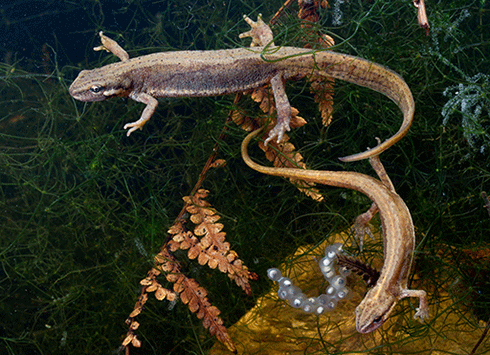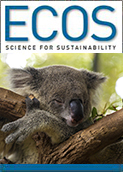
|
Published: 9 July 2014
From pet to pest: newts settle on the urban fringe
Once confined behind pet shop windows, the smooth newt – now labelled a ‘controlled pest animal’ in Victoria – has made a new home in bushland around Melbourne’s urban fringe.
Newts are aquatic amphibians that mainly come from the northern hemisphere, but according to a paper published in the scientific journal Biological Invasions, scientists from the ARC Centre of Excellence for Environmental Decisions (CEED) and the Victorian Department of Environment and Primary Industries (DEPI) have documented the first instance of a newt species establishing in the wild in Australia.
‘Some of the sites where we have detected newts are quite far apart, so we suspect that the species has spread considerably, and has established itself in more areas than our study has revealed,’ says Dr Reid Tingley of CEED and The University of Melbourne.
‘The smooth newt was available in the pet trade for decades before the Victorian government declared it a ‘controlled pest animal’ in 1997. This invasion therefore likely originated from the release or escape of captive animals.’
Dr Tingley says as this is the first newt species found in the wild in Australia, the researchers cannot yet say how widely the species will spread or what sort of impact it will have on native wildlife.
‘In Europe, smooth newts live in woodlands, meadows, and a range of disturbed habitats, and so they can easily adapt to many different types of environments. Knowing that the climate of south-eastern Australia is similar to the species’ native range adds to the concern.’
Closely related species to the smooth newt also carry chytrid fungus – a pathogen that has caused widespread decline in Australian frogs, the researchers say.
Department of Environment and Primary Industries (DEPI) Principal Officer, Invasive Animals, Andrew Woolnough, says preliminary testing showed that the newts possessed very low levels of a toxin not naturally found in the Australian environment.
‘However, DEPI believes these levels do not pose a significant threat to other wildlife,’ Dr Woolnough says.
Dr Tingley points out that the next step is to find out exactly how far the newts have spread.
‘We may be able to eradicate them if they’re in small numbers, but if they’ve spread quite far, we may have to focus on limiting them to their current extent. It’s cheaper and more effective to act quickly, rather than waiting to see what their impact will be.’
The study also highlights the importance of stringent pre-border biosecurity, notes Dr Tingley. ‘Smooth newts have been present in Australia for quite some time, but stopping non-native species from getting into the country in the first place is even more cost-effective than trying to deal with them after they have been introduced.’
Source: ARC CEED




